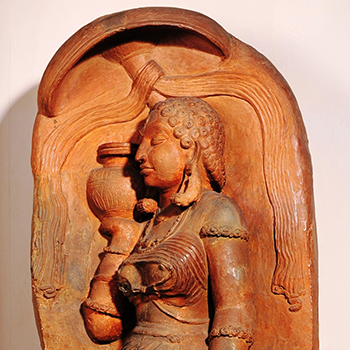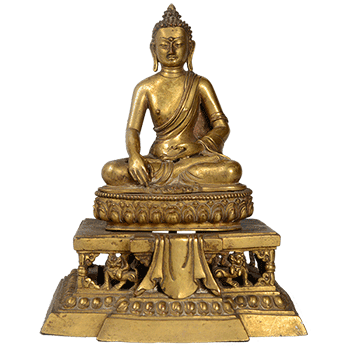This artefact is a jar that has been perforated i.e. created with holes on its surface. It belongs to the site of Harappa within the Indus Valley civilization which is dated to approximately to 2500 BC. Made of terracotta, it is a large object measuring 15.9cm in height and 6.9cm width. One can currently find this artefact in the Indus Valley civilization Gallery within National Museum, New Delhi
































